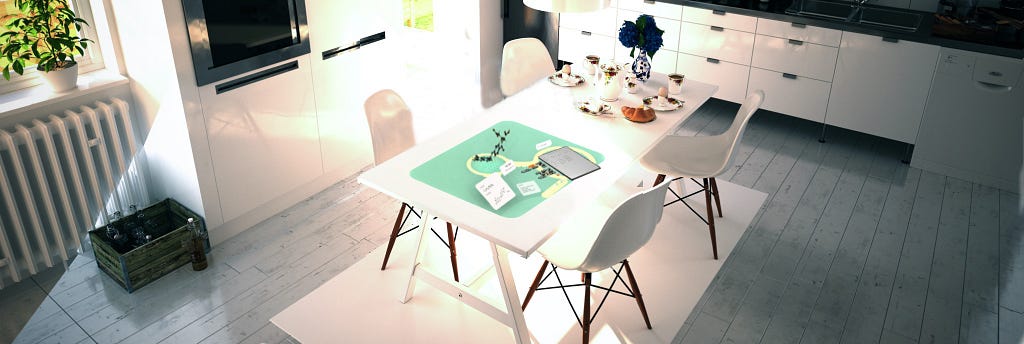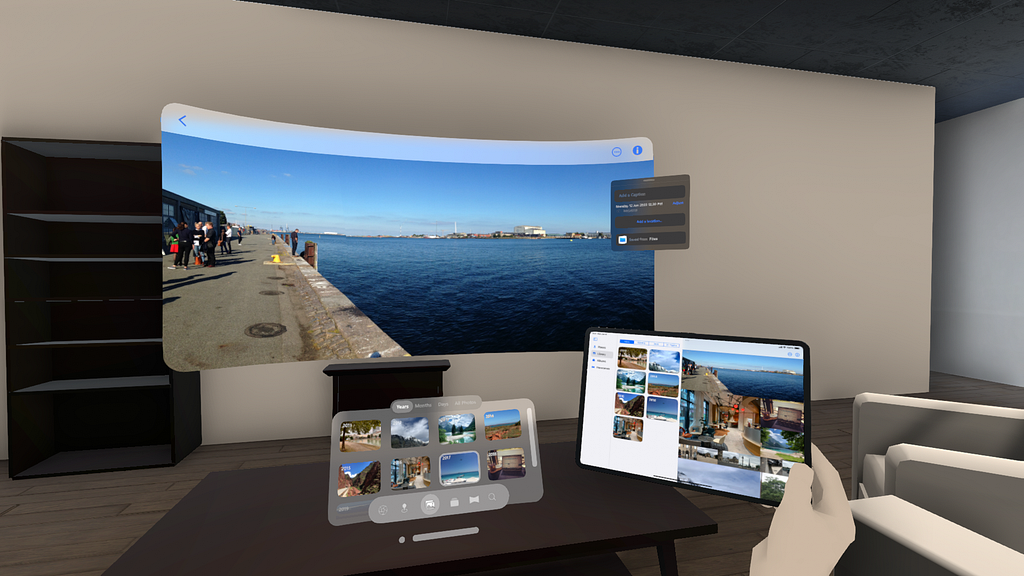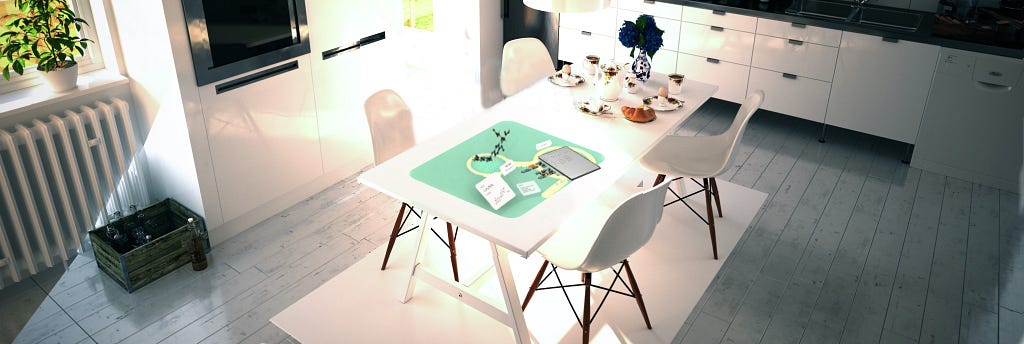AR is shaping out to be the next big thing. Apple’s Vision Pro (ironically, a VR headset) is here to show us why Augmented Reality might be the future. How should we design to use its full potential?

With UI for AR already out of the way, I spent more time designing 3D apps. And here I am with another Medium post about my findings. This time around I want to focus on the UX part.
We can figure out HOW to design for AR, but first: WHAT should we design?
I’ve been working on AR interfaces for a year. Coming from flat design, one thing becomes immediately clear — those apps should be treated as a workspace, not a screen. Huh.
To complicate things even more, VR concepts might not apply to AR. VR’s strength is a distraction-free environment. This, as a consequence, can make you feel detached, and well… lonely.
AR solves that. Although here the hardware still leaves a lot to be desired. I’ve been mainly working on Tilt Five, but it’s the same with HoloLens or Magic Leap: image quality, tracking and FOV quickly become an issue.
That’s why trying Vision Pro feels so refreshing— Apple wants to show us the benefits of AR, even though the technology is not ready yet.
Vision Pro is a VR pretending to be AR …and it’s great at it.
Augmented Apps
Vision Pro shows how AR can improve our workflow. Arranging apps, remembering their location, as if we were interacting with real objects. Apps are no longer hiding off-screen.
Now we can rely on our spatial memory. In AR that’s the real deal. It’s easy to recall where you put something, when your room is a point of reference.
This changes the way we perceive software. To go with it you should consider the purpose of your app:
- Consuming content vs. creating content. Is your whole app something you’d want to keep in a specific place, as one object? Or is your content something we would like to move around?
- Sitting down vs. moving around. How much time will we spend in the app? Is it okay to move around or do we need focus, stay in one place?

“But!” you might say, “this is not that different from VR”. Well… sure. We can do better.
How about enhancing the real world, instead of trying to cover it?
Augmented Objects
Vision Pro does some of it already. For example, it detects your mac — you can connect to it just by looking at it. What if those kinds of interactions were the norm? What if our glasses could, say, check what we are writing down?


Above you can see a prototype I made. This app provides context for anything you read or write down. It can show flashcards or even 3D models. Isn’t that amazing? I am definitely amazed.
AR apps can be so much more than couple of iPads hanging in the air.
So, does blending into the environment make sense for your app? Will it enhance the experience?
The app has to have a proper anchor to do it correctly:
- Anchoring to physical objects. Apps can become a part of our daily routine. Associating app with a real object, like a table, a fridge, or a book ensures we don’t forget to check it.
- Anchoring to activities. App can be an activity in itself or a part of something bigger. Adding UI to a regular activity might speed it up, help forming a habit, improve focus and much more.
And the most important one:
- Anchoring to other people. Should the UI change in case user is joined by others? Should it invite others to join when they drop by? After all, in AR you don’t have to be alone.
Augmented Collaboration
Collaboration in AR is not only possible, it just naturally makes sense. It creates virtual objects and places them in our living space. It follows naturally, that those should be shared.
Collaboration doesn’t have to be a bunch of people staring at screens.
So imagine my surprise when I found out Apple’s Vision Pro doesn’t allow that. I think this is the most glaring omission, even if it is a 1st-gen product. Arranging apps and websites around your office, knowing no one else will see them… well it’s a bit sad.
Sharing digital experiences in the same physical space is the biggest difference between VR and AR.
We can’t just ignore that. In fact we have to prepare for that. Here are some things to keep in mind while we are at it:
- Joining a collaboration session should be frictionless. People are together in the same room, they will expect a simple way of syncing what they can see.
- Content should be visible from various angles. Multiple people could be seeing (and even interacting with) the same thing.
- This might be hard to add later on. This amount of flexibility is not something that can be implemented without major redesign. We have to build our apps with that in mind.
AR apps shouldn’t just allow collaboration, they have to encourage it.
Augmented Reality
I think it’s fantastic we have a way of looking into the future with current hardware.
Vision Pro gives us a chance to experience AR, figure out its uniqueness, understand the potential. We can start rethinking our products with all this in mind. To be ready when it finally arrives!

Useful AR resources
- NN Group has a great article about AR guidelines. It really makes you think about the possibilities: The Usability of Augmented Reality
- UX Matters came up with an interisting list of AR guidelines for UX Designers: 6 UX Design Principles for Augmented-Reality Development
Also, check out my portfolio for more AR design experiments!
https://kamilkolodziejczyk.pl
UX design for Apple’s Vision Pro AR headset was originally published in UX Collective on Medium, where people are continuing the conversation by highlighting and responding to this story.

Leave a Reply